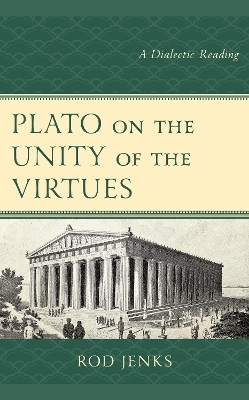
Plato on the Unity of the Virtues
A Dialectic Reading
Seiten
2024
Lexington Books (Verlag)
978-1-4985-9205-5 (ISBN)
Lexington Books (Verlag)
978-1-4985-9205-5 (ISBN)
In Plato on the Unity of the Virtues, Rod Jenks argues that while Plato makes several attempts to show how virtue is one, he deliberately fails to secure this because he thinks the way in which the virtues are both one and many is finally ineffable.
Plato, in the Protagoras, suggests that the virtues are profoundly unified yet also distinct. In Plato on the Unity of the Virtues: A Dialectic Reading, Rod Jenks argues that the way in which virtues are both one and many is finally ineffable. He shows how Plato countenances ineffability throughout his corpus. Jenks’s interpretation of Protagoras accounts for the otherwise-inexplicable inability of both Socrates and Protagoras to identify the bone of contention between them. Not only can the thesis not be argued for; it can’t even be properly stated. In this book, Jenks shows how the long exegesis on the Simonides poem is philosophically relevant. Further, he shows that both the parts-of-the-face analogy and the gold analogy are inadequate, arguing that Plato intends them to be so. Jenks explains why the unity thesis is supported by what most scholars agree are terrible arguments: that the virtues are both one and many. He explains why, despite the unity claim being profoundly elusive, Plato believes it to be crucial that we come to appreciate how virtue, which really does have parts, can also be profoundly one.
Plato, in the Protagoras, suggests that the virtues are profoundly unified yet also distinct. In Plato on the Unity of the Virtues: A Dialectic Reading, Rod Jenks argues that the way in which virtues are both one and many is finally ineffable. He shows how Plato countenances ineffability throughout his corpus. Jenks’s interpretation of Protagoras accounts for the otherwise-inexplicable inability of both Socrates and Protagoras to identify the bone of contention between them. Not only can the thesis not be argued for; it can’t even be properly stated. In this book, Jenks shows how the long exegesis on the Simonides poem is philosophically relevant. Further, he shows that both the parts-of-the-face analogy and the gold analogy are inadequate, arguing that Plato intends them to be so. Jenks explains why the unity thesis is supported by what most scholars agree are terrible arguments: that the virtues are both one and many. He explains why, despite the unity claim being profoundly elusive, Plato believes it to be crucial that we come to appreciate how virtue, which really does have parts, can also be profoundly one.
Rod Jenks teaches philosophy at the University of Portland.
Preface
Chapter 1: Introduction
Chapter 2: The Quality of the Unity Arguments
Chapter 3: Unity Passages in the Protagoras
Chapter 4: The Unity Arguments
Chapter 5: Rival Explanations of Unity
Chapter 6: Other Indications of Ineffability
Chapter 7: Meaning and Express-ability
Chapter 8: Socratic Intellectualism
Chapter 9: Indirect Argument in Plato
Chapter 10: The Importance of Unity
Conclusion
Endnotes
Bibliography
Indexes
About the Author
| Erscheinungsdatum | 23.03.2024 |
|---|---|
| Verlagsort | Lanham, MD |
| Sprache | englisch |
| Maße | 152 x 227 mm |
| Gewicht | 213 g |
| Themenwelt | Geisteswissenschaften ► Geschichte ► Regional- / Ländergeschichte |
| Geisteswissenschaften ► Philosophie ► Ethik | |
| Geisteswissenschaften ► Philosophie ► Philosophie Altertum / Antike | |
| ISBN-10 | 1-4985-9205-8 / 1498592058 |
| ISBN-13 | 978-1-4985-9205-5 / 9781498592055 |
| Zustand | Neuware |
| Haben Sie eine Frage zum Produkt? |
Mehr entdecken
aus dem Bereich
aus dem Bereich
Erinnerungen
Buch | Softcover (2024)
Pantheon (Verlag)
CHF 22,40


